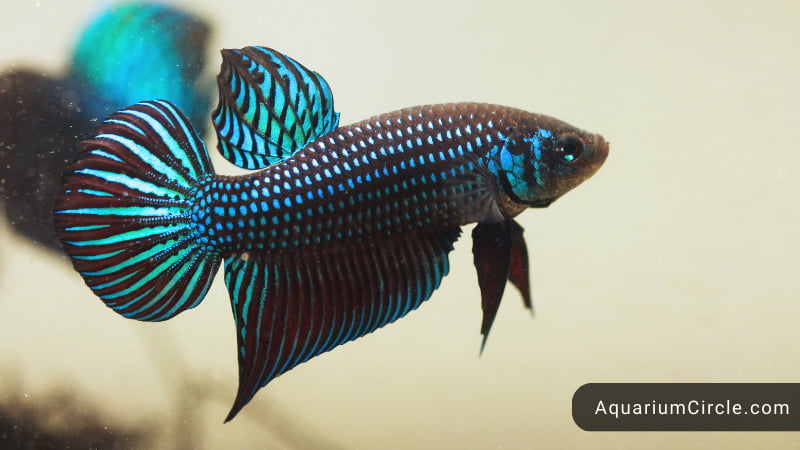Betta fish, also known as Siamese fighting fish, are a popular freshwater aquarium fish known for their striking colors and flowing fins. Understanding Betta fish natural habitat is important for providing them with a suitable environment in captivity, reducing stress and promoting healthy behaviors. In this blog post, we will explore the Betta fish natural habitat and how to mimic it in captivity.
See also
- The Oldest Living Betta Fish In The World – Betta Fish Age Facts & What I Found
- Betta Fish Water Temperature: What Is The Ideal Range Of Betta Fish Water Temp?
- Betta Fish Tank Size: Are You Considering The Best Tank Size For Betta Fish?
What Is A Wild Betta Fish And How Do They Look Like?
A wild Betta fish, also known as Betta splendens, is the natural form of the popular aquarium fish. In the wild, they are found in Southeast Asia, including Laos, Thailand, Cambodia, and Vietnam. Wild Bettas have a sleek, slender body shape with smaller fins than their domesticated counterparts. They are typically brownish or greenish in color, with a hint of blue or red on their fins. Their natural coloration helps them blend in with their surroundings and avoid predators. Unlike the colorful and flamboyant Betta fish commonly found in pet stores, wild Bettas have a more subdued appearance. However, their natural beauty and adaptability make them a fascinating fish to observe in their native habitat.
Where Do Betta Fish Come From?
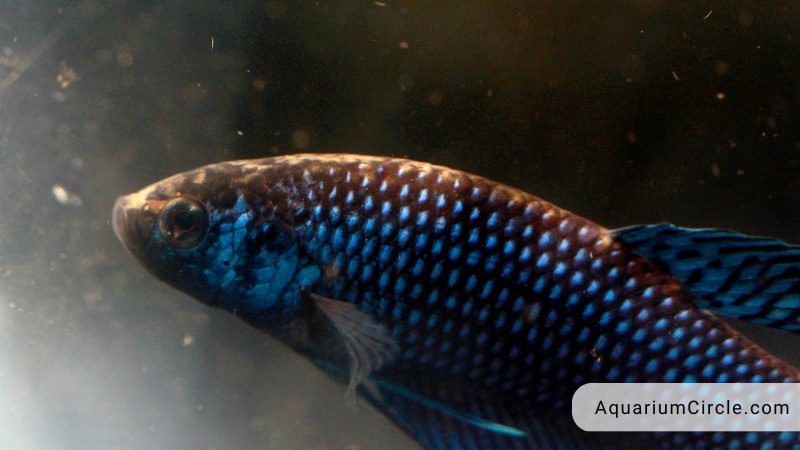
Betta fish, also known as Siamese fighting fish, are native to Southeast Asia, including countries such as Laos, Cambodia, Vietnam, and Thailand. They are found in the Mekong basin and inhabit shallow, slow-moving bodies of water such as rice paddies, swamps, and streams.
In their natural habitat, Betta fish live among vegetation, including floating, submerged, and emergent plants. They have adapted to survive in water with low oxygen levels, which is why they can breathe air from the surface using a specialized organ called the labyrinth organ. Betta fish were first introduced to the Western world in the mid-1800s and have since become a popular aquarium fish due to their unique and colorful appearance.
The name “Siamese fighting fish” refers to the historical practice of breeding Betta fish in Thailand (formerly known as Siam) for the purpose of fighting them against one another. This practice was popular in Siam for centuries before the Betta fish were introduced to the Western world as ornamental fish. The aggressive behavior of male Betta fish towards each other is what made them ideal for fighting. However, it’s important to note that this practice is now illegal in many countries and should not be encouraged or practiced by fish owners. Betta fish should be kept in a peaceful and appropriate environment that mimics their natural habitat.
Betta Fish Natural Habitat: What Does It Have?
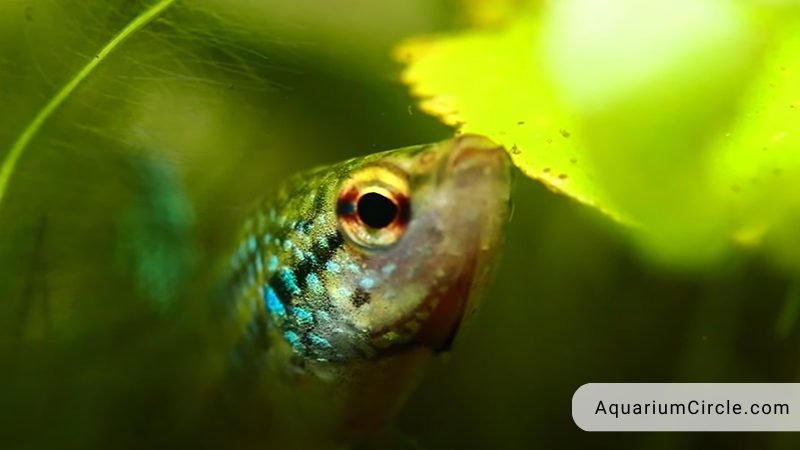
Betta fish are naturally found in shallow, slow-moving bodies of water such as rice paddies, swamps, and streams in Southeast Asia. Their natural habitat is characterized by several key features that are crucial to their survival. Betta fish thrive in areas with plenty of vegetation, including floating, submerged, and emergent plants. The plants provide cover and shelter for the fish, which helps them to avoid predators and feel secure.
Betta fish require clean, warm, and slightly acidic water to thrive. The water should also be low in flow, as Betta fish are not strong swimmers and can become stressed in fast-moving water. Betta fish have a unique adaptation that allows them to breathe air from the surface of the water using a specialized organ called the labyrinth organ. This allows them to survive in water with low oxygen levels, such as stagnant or slow-moving water.
Betta fish are territorial and require hiding places to feel secure. In their natural habitat, they hide in plants, under rocks, and in other structures. Betta fish often share their natural habitat with other aquatic species, including snails, shrimp, and small fish. These species play important roles in the ecosystem and can help to create a balanced and healthy environment for Betta fish.
See also: Top 3 Most Crucial Things To Know Before Getting A Multiple Betta Fish Tank
Wild Betta Fish’s Diet In Its Natural Habitat
Betta fish are omnivores, which means they eat both plant and animal matter. In their natural habitat in Southeast Asia, they have access to a wide variety of flying insects and their larvae, which make up a large part of their diet. Midge flies, bloodworms, and other insect larvae that require water to lay and hatch eggs are readily available and high in protein, making them an important staple for Betta fish in the wild.
Additionally, betta fish require fiber in their diet to avoid constipation, which can be a common problem for household bettas. In their natural habitat, they obtain fiber from the exoskeletons of insects and plant material. By understanding the dietary needs of betta fish, aquarium owners can provide a balanced and varied diet to promote their health and well-being.
How Siamese Fighting Fish Mate In The Wild?
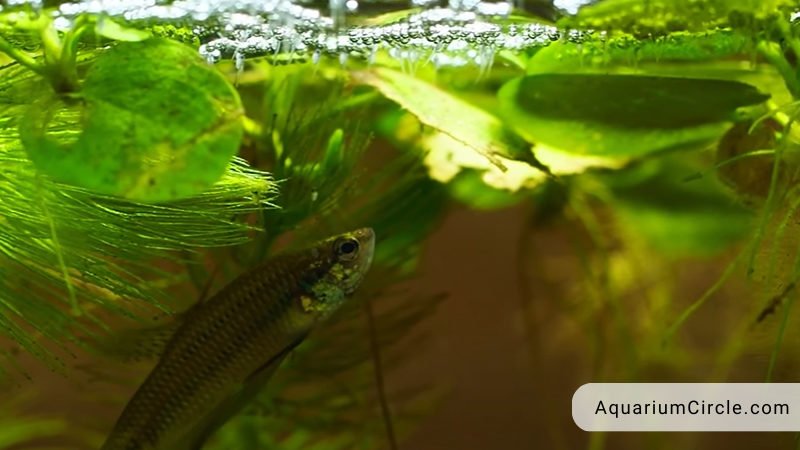
Another common question about betta fish is how they mate in the wild without killing each other. In captivity, betta owners are advised to separate the male and female betta after breeding to prevent the male from harming the female. In the wild, male bettas build a bubble nest using air bubbles and saliva. When a female approaches the nest with eggs, the male will wrap himself around her and release her eggs, which he then fertilizes and protects in the bubble nest. The female quickly leaves the area after mating, avoiding any potential conflict with the male.
However, in a confined aquarium environment, there is no escape for the female, which can lead to aggression from the male. It’s important to note that betta fish are not naturally aggressive but are territorial creatures that will fiercely protect their bubble nest and offspring. By understanding their natural mating behavior and providing a suitable environment for breeding, aquarium owners can successfully breed betta fish without harming either the male or female.
Betta Fish Live In An Aquarium (Captivity): What Challenges Do They Have To Face With?
Betta fish face several challenges when living in an aquarium. One of the most significant is creating an environment that closely matches their natural habitat. Without the right water temperature, hiding places, and plants, bettas can become stressed and more susceptible to disease. Providing enough space is also essential, as bettas are active and intelligent fish that need room to swim and explore.
Keeping bettas on a balanced and varied diet can also be challenging, as they may not have access to the same foods they would in the wild. Finally, bettas can be prone to certain health issues, which can be exacerbated by poor water quality or overcrowding. Understanding and addressing these challenges is essential to ensuring that betta fish remain healthy and happy in captivity.
Does this mean they will be safe when live in the wild?
While betta fish face certain challenges in an aquarium, they are well suited to their native home in the wild. Yet, they, like all living organisms, must struggle with a variety of conditions that might threaten their life, such as industry, agriculture, overfishing, pollution, disease, predators, and climate change.
As human societies expand, wetlands, forests, and water habitats are often transformed to accommodate the growth of industry and infrastructure such as pipes, highways, train tracks, and canals. This can disrupt the natural environment of wild bettas and alter their habitats.
Overfishing, especially with nets, can unintentionally catch other fish, causing unnecessary damage to fish populations. Increased production and industry also produce more waste and pollutants, such as chemicals in rivers, which can lead to disease in fish.
Predators and larger fish can easily prey on wild bettas if they lose their natural hiding spots due to human intervention or changes in the environment. Climate change and the spread of invasive fish species are additional threats to wild bettas.
How Can We Maintain The Natural Habitat For Our Bettas?
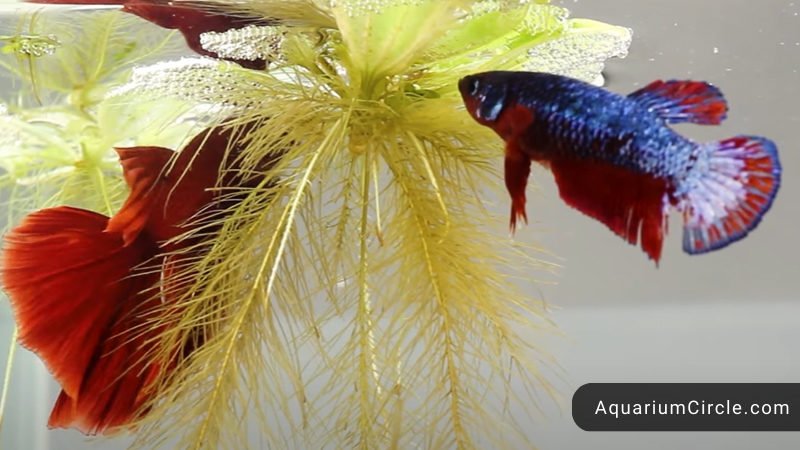
Maintaining the natural habitat for betta fish is crucial for their survival, and there are several ways we can help preserve their environment:
- Support conservation efforts: Many organizations work to protect and conserve natural habitats for fish and other aquatic species. Consider donating to or volunteering with these groups to support their efforts.
- Use sustainable practices: As individuals, we can reduce our impact on the environment by using sustainable practices, such as reducing waste, using eco-friendly products, and conserving water.
- Choose responsible fishkeeping: If you keep bettas as pets, choose responsible fishkeeping practices. This includes providing a suitable tank and environment, feeding them a balanced diet, and avoiding overcrowding.
- Avoid introducing invasive species: Invasive fish species can have a negative impact on the natural ecosystem, so it’s important to avoid introducing them into the wild. If you have a fish tank, make sure you dispose of water and fish waste properly to avoid contaminating local water sources.
- Educate others: Spread awareness about the importance of preserving natural habitats for betta fish and other aquatic species. Encourage others to make sustainable choices and support conservation efforts.
Tips for mimicking the natural habitat in captivity
Mimicking the natural habitat of bettas in captivity is a very good way to ensuring their health and happiness. To mimic their natural habitat, betta owners should consider the following:
- Tank Size: Bettas need space to swim and explore, so a tank size of at least five gallons is recommended. A larger tank allows for more plants, hiding spots, and room to move.
- Water Quality: Bettas are sensitive to water quality, so it’s important to keep the water clean and free from toxins. Owners should use a filter and perform regular water changes.
- Temperature: Bettas are tropical fish and require a consistent water temperature between 78-82 degrees Fahrenheit (25.5-28°C). A heater can be used to maintain a stable temperature.
- Plants: Adding live plants to the tank not only adds to the natural aesthetic but also helps to mimic the betta’s natural habitat. Live plants provide oxygen, filtration, and hiding spots for the betta.
- Substrate: Bettas prefer a soft substrate, such as sand or small pebbles, as it mimics the muddy bottom of their natural habitat.
- Hiding Spots: Bettas are territorial and enjoy having hiding spots to retreat to. Owners can add plants, rocks, and decorations to the tank to create hiding spots.
- Lighting: Bettas require a regular day-night cycle. Owners should provide 8-12 hours of light a day and 12-16 hours of darkness.
- Food: Bettas are omnivores and need a varied diet that includes high-quality pellets, frozen or live food such as brine shrimp or bloodworms, and some plant matter like spirulina.
Video About Betta Fish Natural Habitat
FAQs
Where do Betta fish come from?
Betta fish are native to Southeast Asia, including Thailand, Cambodia, and Vietnam.
What is the natural habitat of Betta fish?
Betta fish naturally live in shallow, slow-moving bodies of water, such as rice paddies, swamps, and streams.
What kind of plants are found in Betta fish natural habitat?
Betta fish natural habitat is rich in vegetation, including floating plants, submerged plants, and emergent plants.
What water conditions do Betta fish require in their natural habitat?
Betta fish require warm, clean, and slightly acidic water with a pH between 6.0 and 7.0.
Why is it important to mimic the natural habitat of Betta fish in captivity?
Providing a suitable habitat for Betta fish in captivity can help reduce stress, promote healthy behaviors, and prevent diseases.
References

Annette M. Chaney is an experienced marine biologist with over 20 years of experience as an aquarist and fishkeeper. She started her first aquarium at a young age, filling it with frogs and goldfish obtained from the ten-cent pet store.
Annette grew up caring for and breeding African Cichlids, which led to a hobby in high school that doubled as a profitable means. Attending Reed College gave her time to solidify herself as an accomplished aquarium caretaker with an eye for sales. After that, from 2009 – 2013, she studied at Roger Williams University – one of the most prestigious universities for Aquaculture and Aquarium in USA. She is the founder of AquariumCircle since 2010.
